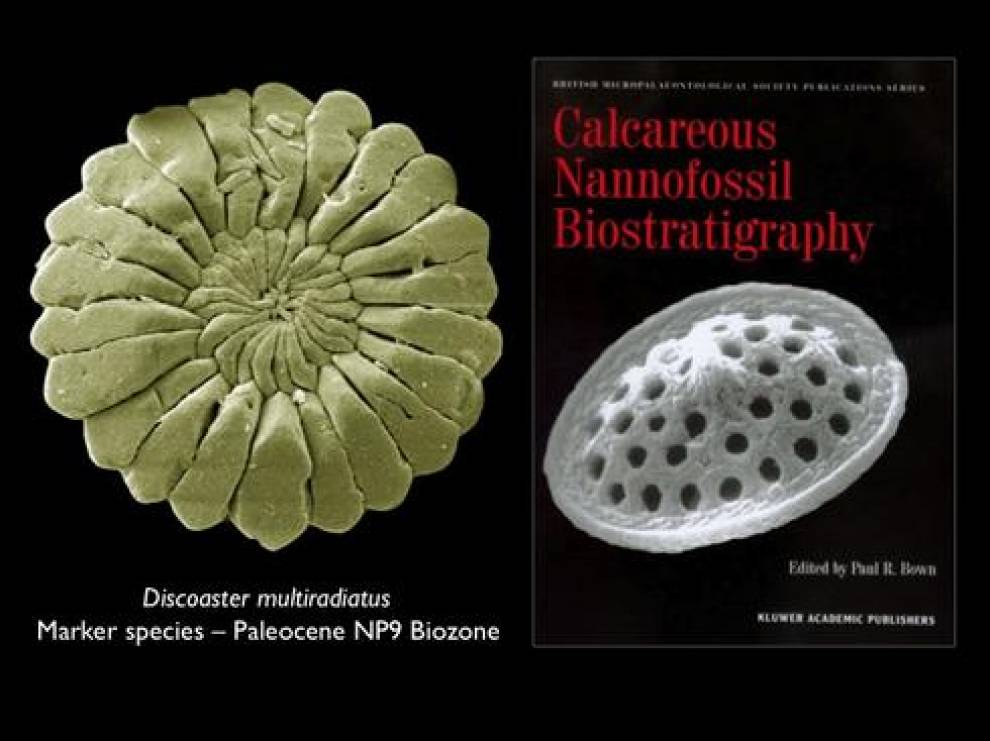The calcareous skeletons of nannoplankton are buried in seafloor sediments, providing a relatively complete and abundant fossil record from the late Triassic (~225 million years ago) to the Present Day.

Paleocene Discoaster biostratigraphic marker species and nannofossil biostratigraphy book
As nannoplankton are continually evolving, then intervals of geological time are characterized by unique groups of species, and the appearance or extinction of particular species (marker species) can be used to mark specific points in time (bioevents). In biostratigraphy, we subdivide time into units called biozones/biochrons, defined at their bases by bioevents. These zones are given short alphanumeric names, e.g., UC1-20 for the upper Cretaceous, NP1-25 for the Paleogene and NN1-21 for the Neogene and Quaternary. Nannofossils are particularly good for biostratigraphy because they are abundant, planktonic, rapidly evolving and widely distributed. Their small size means they can be studied from minute rock chips, which is of particular value in hydrocarbon exploration and development, and scientific drilling.
 Close
Close

